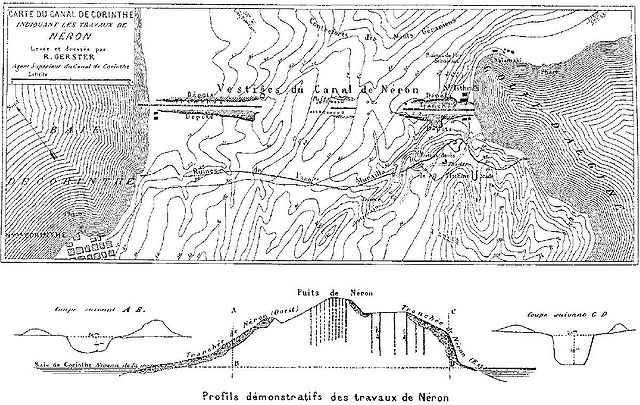The Corinth Canal is an artificial canal in Greece that connects the Gulf of Corinth in the Ionian Sea with the Saronic Gulf in the Aegean Sea. It cuts through the narrow Isthmus of Corinth and separates the Peloponnese from the Greek mainland, making the peninsula an island. The canal was dug through the Isthmus at sea level and has no locks. It is 6.4 kilometres in length and only 24.6 metres wide at sea level, making it impassable for many modern ships. It is currently of little economic importance and is mainly a tourist attraction.
Corinth Canal
Remains of Nero's canal project in 1881
Monument at the Corinth Canal remembering the architects
Share of the company Canal Maritime de Corinthe, issued 1882
The Gulf of Corinth or the Corinthian Gulf is a deep inlet of the Ionian Sea, separating the Peloponnese from western mainland Greece. It is bounded in the east by the Isthmus of Corinth which includes the shipping-designed Corinth Canal and in the west by the Strait of Rion which widens into the shorter Gulf of Patras and of which the narrowest point is crossed since 2004 by the Rio–Antirrio bridge. The gulf is bordered by the large administrative divisions : Aetolia-Acarnania and Phocis in the north, Boeotia in the northeast, Attica in the east, Corinthia in the southeast and south and Achaea in the southwest. The gulf is in tectonic movement comparable to movement in parts of Iceland and Turkey, growing by 10 mm (0.39 in) per year.
Gulf of Corinth
Gulf of Corinth as seen from the mountains near upper Ziria. To the right of the photo we can see the Trizonia island
Striped dolphins jumping in the gulf
Gulf of Corinth from Acrocorinth








